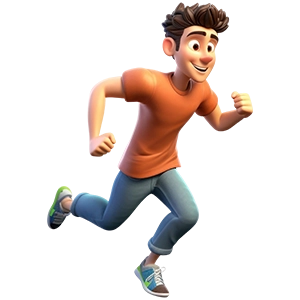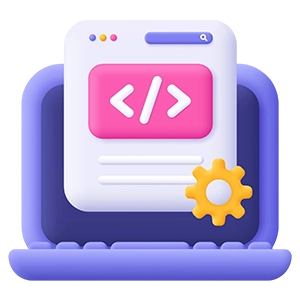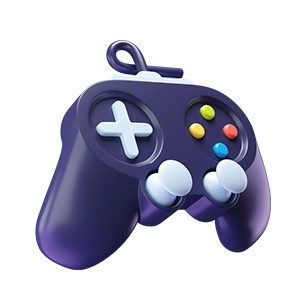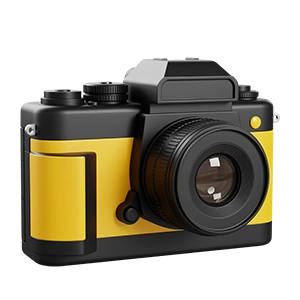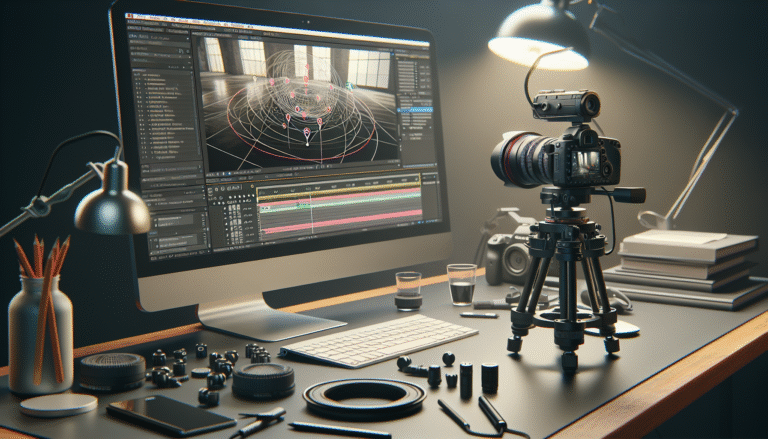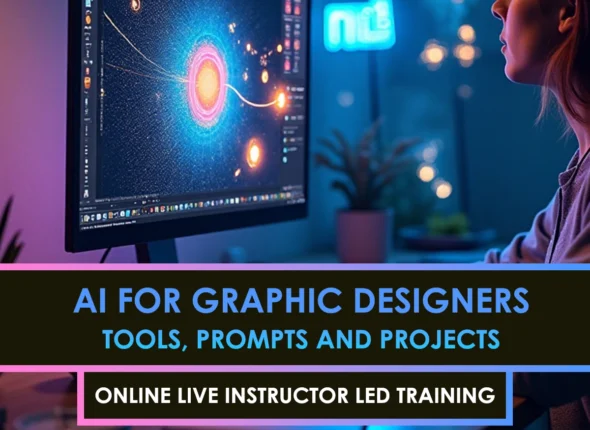If you’re ready to transform your live-action shots by integrating jaw-dropping 3D elements, this 3d camera tracking tutorial is your new best friend. Yeah, I’ve been there too, staring at footage, wondering why everything I add is floating in a wobbly mess. Let’s fix that together. Below, you’ll find an ultimate guide that walks you through everything you need for accurate camera match-moving, from prepping your footage to avoiding all-too-common pitfalls.
Master 3D camera tracking basics
Camera tracking (or match moving) is the art of analyzing your live-action footage to replicate the exact camera movements in a virtual 3D scene. By “locking” CGI objects into place, you keep them anchored realistically in the shot. In other words, your digital spaceship will fly where it’s supposed to fly, instead of drifting aimlessly in the corner of your frame.
Camera tracking underpins a wide range of VFX work, from environments in fantasy epics to more minor, subtle additions, such as billboard replacements. If you’re also exploring specialized workflows, consider checking out camera tracking in Nuke or Blender. Each tool has unique quirks, but they all share the same fundamental principles.
Understand basic match-moving concepts.
When you create a match move, you’re solving the camera’s position, rotation, and lens details from video footage. This means the software is looking for tracking points in your scene that you (or an automated tracker) identify as features that remain consistent across frames.
- Points to consider:
- You want clear, high-contrast areas that can be easily tracked (such as edges, corners, or distinct textures).
- Avoid fast motion blur or extremely dark footage whenever possible.
- Keep camera metadata on hand. Focal length, sensor size, and lens type contribute to achieving accuracy.
For more nuances on this technique, you can explore match moving in VFX and see how it connects to everything from compositing to full-blown 3D integration.
Get the right footage.
A sound camera track always starts with quality footage. Yes, it might sound like the standard line from everyone, but trust me, the proper setup can save you from a ton of frustration later. Here’s what to keep in mind:
- Use a stable camera whenever possible. Handheld shots are doable, but be prepared for more complicated solves.
- Make sure your scene is well-lit. Shadows can help highlight objects, but severe underexposure will kill your tracker’s ability to find good tracking points.
- Whenever possible, shoot with minimal motion blur. It’s no fun trying to lock onto a smudge that changes shape every frame.
If you prefer to keep it all within Adobe’s ecosystem, you might also consider camera tracking in After Effects. It’s fully integrated, so you don’t have to jump between too many programs.
Follow a complete tracking workflow.w
Below is a step-by-step workflow to guide you through a typical camera tracking pipeline:
- Import and organize
- Bring your footage into a dedicated 3D camera tracker or compositor.
- Check your frame rate and resolution, then label your scene for easy navigation.
- Identify track points
- Highlight high-contrast spots or areas that maintain consistent detail.
- Use automated tools sparingly. Sometimes, a mix of manual and automated tracking yields the best results.
- Solve the camera
- Adjust the solver settings according to the software’s recommendations.
- Check your error average. Low error means your 3D camera movement closely matches your real camera’s movement.
- Set up the scene origin.
- Designate a ground plane or anchor point that helps the 3D environment determine where the “floor” or “zero” is located.
- Orient your scene so the 3D coordinate system lines up logically with your tracked footage.
- Test, tweak, repeat
- Preview your track with a test object.
- If it slides, investigate your track points and solver settings, then refine until it sticks perfectly.
It’s often a process of minor adjustments, but that’s how you ensure accuracy. Take your time, zoom in, check your track from multiple angles, and be mindful of drift.
Integrate 3D elements seamlessly.
Once you nail thetrackinge, it’s time to place your 3D models or effects:
- Import your tracked camera data into your 3D software or compositing tool.
- Add your 3D object, light it to match the scene, and line it up based on your origin point.
- Play through the timeline to confirm everything stays locked in.
- Tweak lighting and shadows. Even a minor mismatch here can give away the composite.
Don’t forget to color-correct your 3D layers to match the live footage. Your final shot should look like it was captured in one pass, even if it’s the ultimate camera trick.
Avoid typical tracking pitfalls.s
The most significant issues that plague aspiring VFX artists often happen because of:
- Blurry or noisy footage. The tracker can’t latch onto a stable detail.
- Repetitive patterns. If you’re filming a tiled floor with no variation, the software may become confused.
- Extreme camera rotations or zooms without reference points.
- Too few valid tracking points. Make sure you track a decent range across the entire frame and scene depth.
If you do end up with a shaky solve, you might need to reshoot or add tracking markers next time. Markers are small, high-contrast visuals that help the software anchor points more reliably.
Explore advanced match-moving tips.
Once you master the basics, try these more advanced moves:
- 360-degree camera tracking: Ideal for immersive experiences, but requires specialized tools.
- Object tracking plus camera solve: If both your camera and objects move, track them separately, then combine them in your 3D scene.
- Node-based magic: Dive into camera tracking in Nuke for complex workflows that let you fine-tune every node.
- Open-source advantage: Experiment with camera tracking in Blender, which offers powerful solvers and a robust 3D suite, all for free.
If your shot is particularly tricky, analyze the type of motion. Pan, tilt, or otherwise? The solution often lies in matching the method to the motion.
Wrap up your ultimate guide.
You made it. By now, you should have a solid understanding of how to accurately track camera movement in your shots, solve it in software, and integrate 3D elements that blend seamlessly into your scene. Remember, every production environment is unique, so a “one size fits all” approach isn’t always possible. However, the core fundamentals—solid footage, attentive tracking, a precise solve, and thoughtful compositing—remain unchanged.
So go forth and nail that rock-solid camera track. Your audience will never suspect those 3D additions weren’t there all along, and your future self will thank you for building such a critical, practical skill set. If you hit any hiccups, keep refining. Next time you open your new scene, pat yourself on the back, and maybe give a friendly shout-out to all the tracking points that made it happen. You’ve got this!
FAQS – Frequently Asked Questions
What is 3d camera tracking?
3d camera tracking is the process of analyzing live-action footage to recreate the exact camera movement in a 3D environment.
Why use 3d camera tracking in VFX?
Using 3d camera tracking in VFX ensures that CGI elements align seamlessly with live footage for realistic composite results.
How does 3d camera tracking work?
3d camera tracking works by identifying feature points, calculating camera motion, and reconstructing it in a virtual 3D scene.
Which software is best for 3d camera tracking?
Popular software for 3d camera tracking includes Blender, PFTrack, SynthEyes, 3DEqualizer, and Boujou.
Is 3d camera tracking the same as match moving?
Yes, 3d camera tracking is often referred to as match moving, as both involve reconstructing camera motion from footage.
What are common challenges in 3d camera tracking?
Challenges in 3d camera tracking include lens distortion, motion blur, occlusion, and insufficient feature points.
How accurate is 3d camera tracking?
Accuracy in 3d camera tracking depends on footage quality, tracking point consistency, and thorough software calibration.
Can 3d camera tracking handle handheld footage?
Yes, advanced 3d camera tracking tools can handle handheld footage by analyzing unstable camera movement and removing jitter.
What is a clean plate in 3d camera tracking?
A clean plate in 3d camera tracking is a footage frame without actors or objects used to aid tracking and background reconstruction.
Does 3d camera tracking require calibration?
Yes, 3d camera tracking requires lens calibration to correct distortion and improve the accuracy of camera motion reconstruction.
Can I learn 3d camera tracking as a beginner?
Absolutely—you can learn 3d camera tracking through tutorials, online courses, and hands-on practice with real footage.
How long does 3d camera tracking take?
Tracking time for 3d camera tracking varies—simple scenes may take minutes, complex footage can take hours of refinement.
Is 3d camera tracking used in feature films?
Yes, 3d camera tracking is essential in feature films to integrate CGI elements with realistic camera movement.
What is camera solve in 3d camera tracking?
Camera solve in 3d camera tracking is the calculation step where the software reconstructs camera path and orientation in 3D.
Does 3d camera tracking support multi-camera setups?
Yes, many 3d camera tracking workflows support multi-camera setups to ensure consistent motion across different angles.
What is the difference between 2D and 3d camera tracking?
2D camera tracking follows flat points in footage, while 3d camera tracking reconstructs full camera movement in 3D space.
Can motion blur affect 3d camera tracking?
Yes, motion blur can reduce the accuracy of 3d camera tracking by making feature points harder to track between frames.
How is lens distortion corrected in 3d camera tracking?
Lens distortion is corrected in 3d camera tracking by feeding calibration grids or metadata into the software before solving camera motion.
Can 3d camera tracking be automated?
Yes, many tools offer automatic 3d camera tracking, though manual cleanup is often needed for optimal results.
What output formats does 3d camera tracking provide?
Common 3d camera tracking outputs include FBX, Alembic, and native formats compatible with 3D apps like Maya or Blender.
What skills are essential for 3d camera tracking?
Essential skills for 3d camera tracking include attention to detail, understanding camera optics, and patience in solving motion.
How does 3d camera tracking integrate with compositing?
3d camera tracking integrates with compositing by exporting camera motion to tools like Nuke or After Effects for accurate layer placement.


